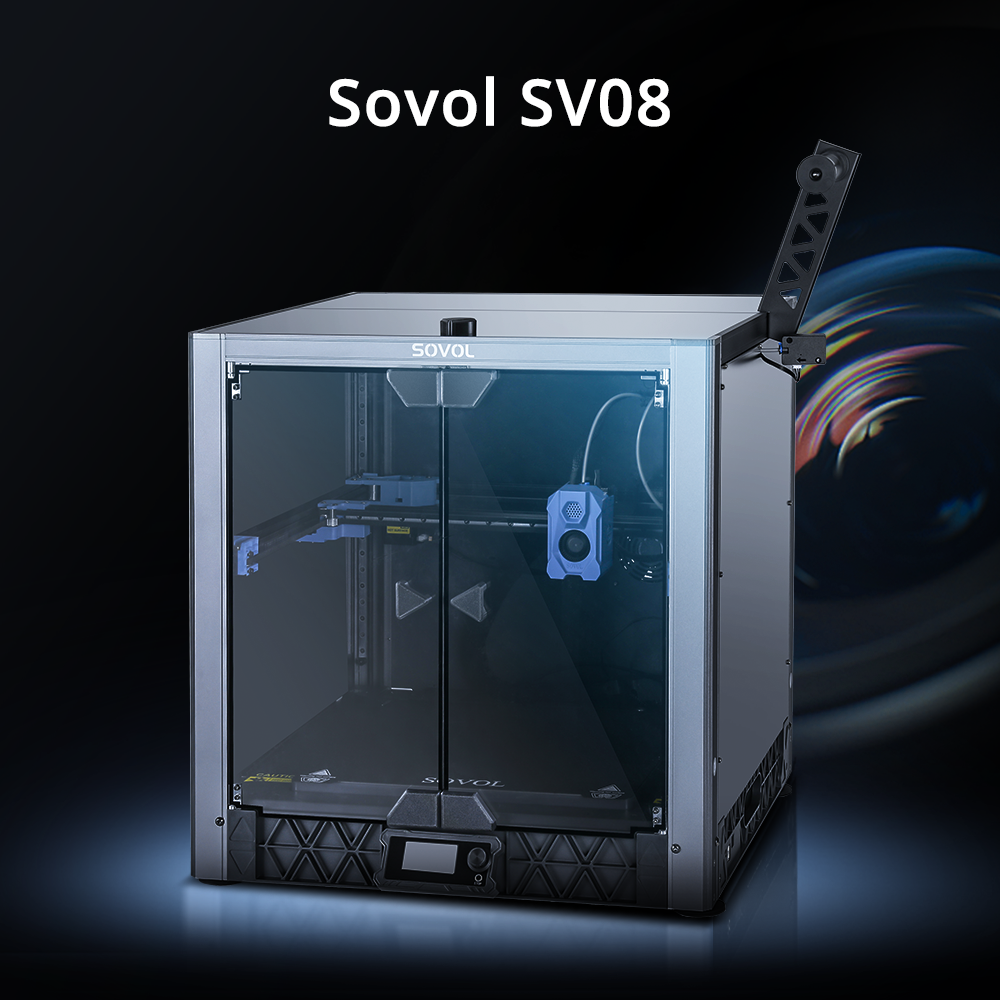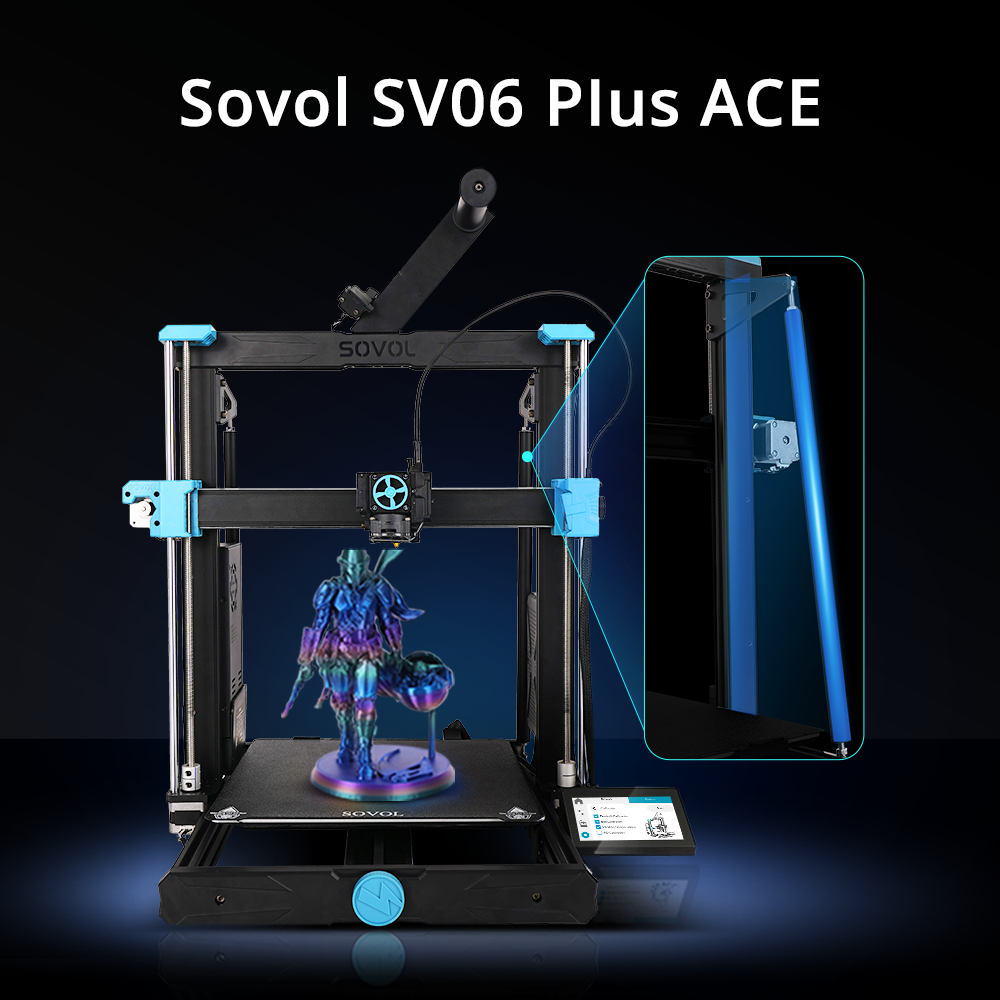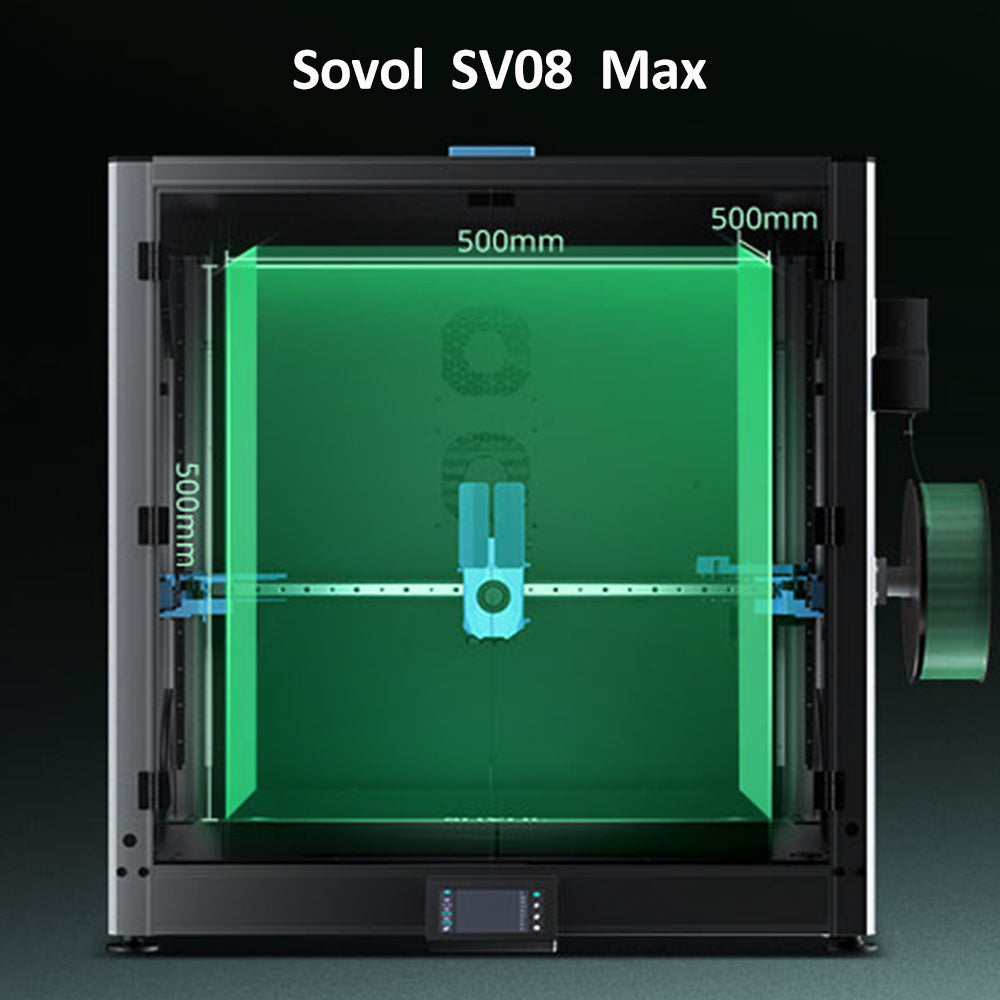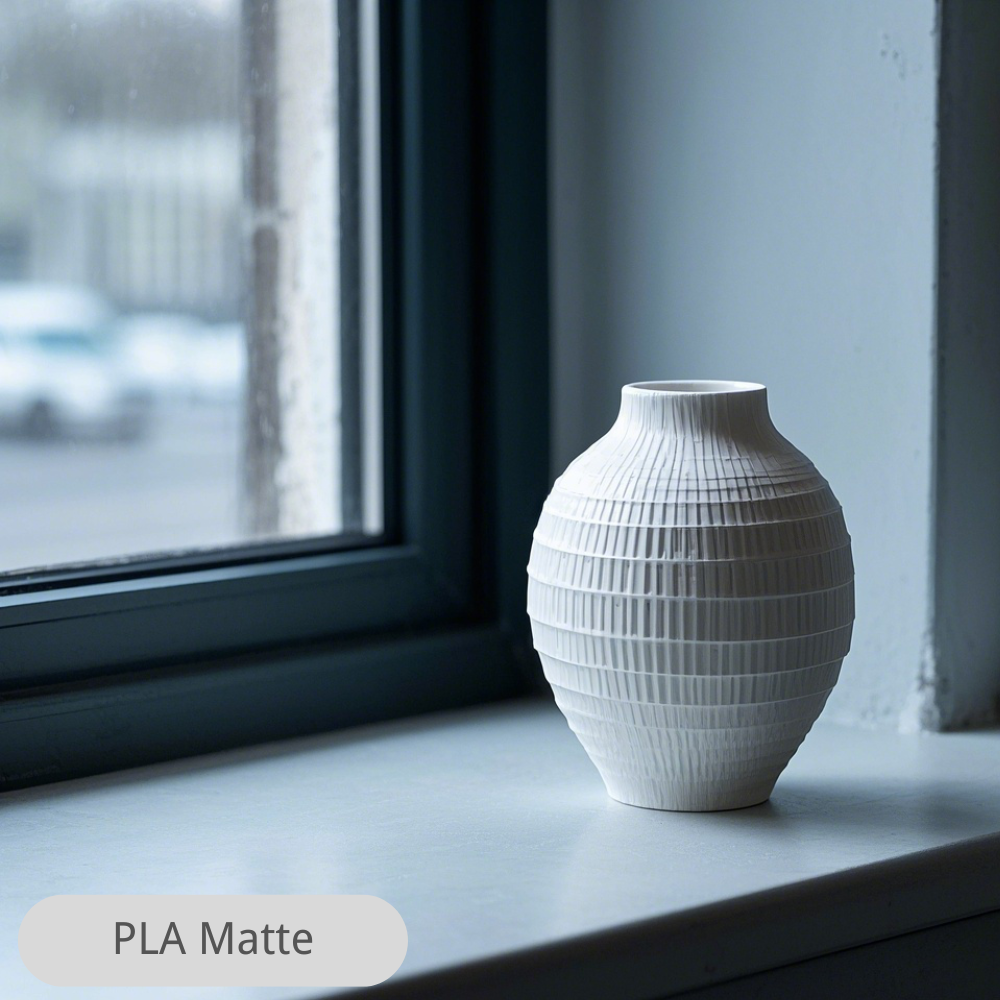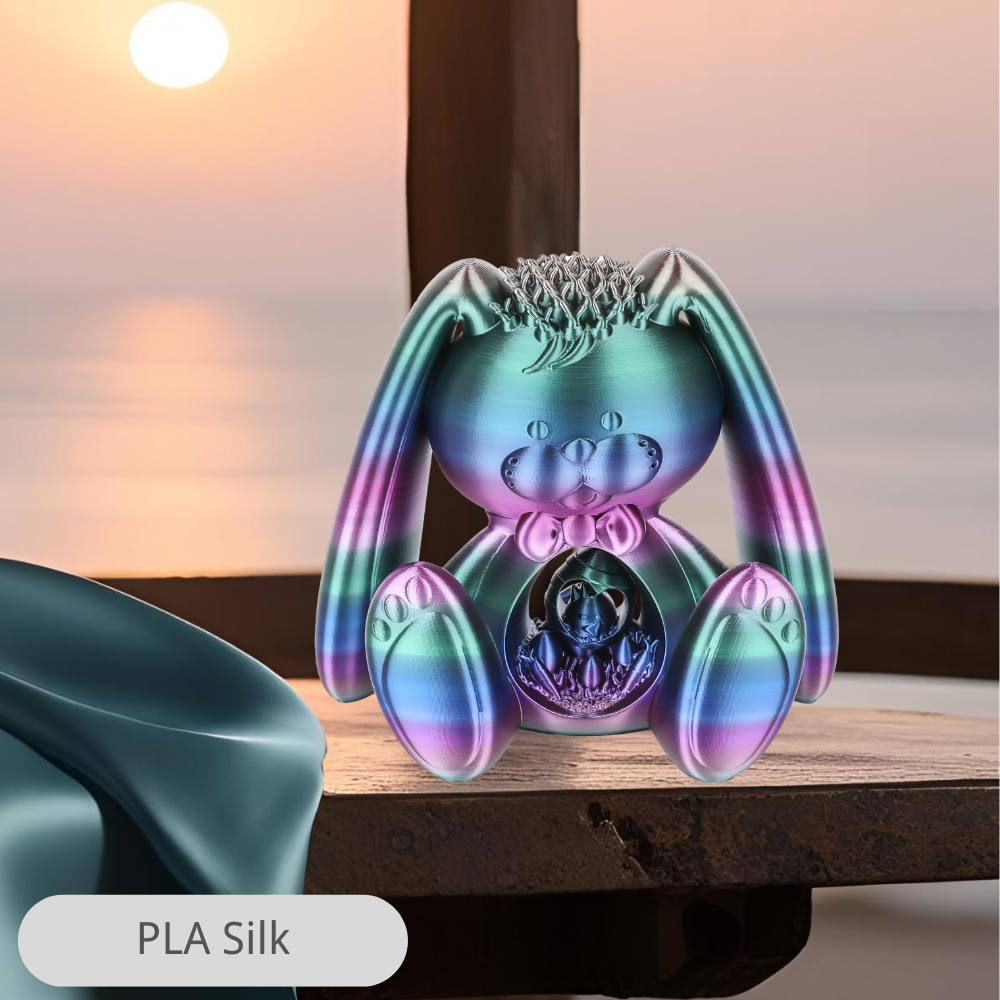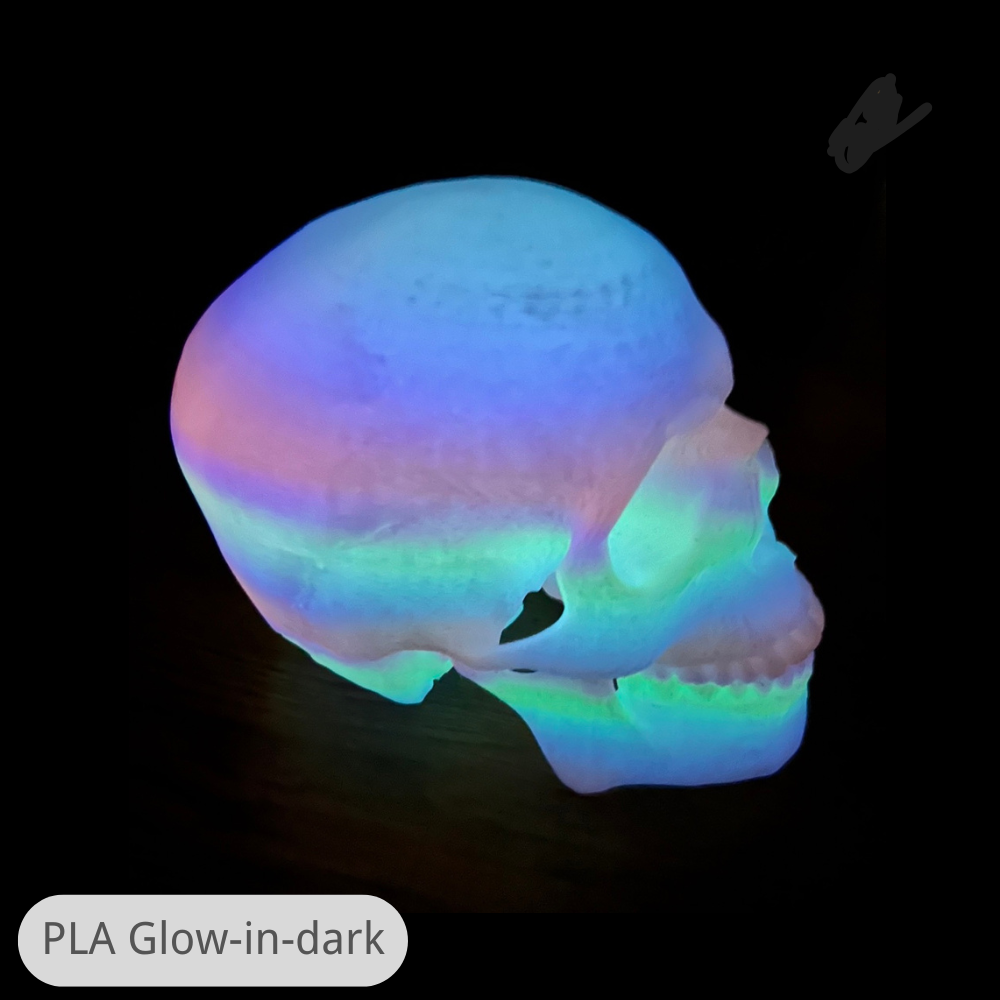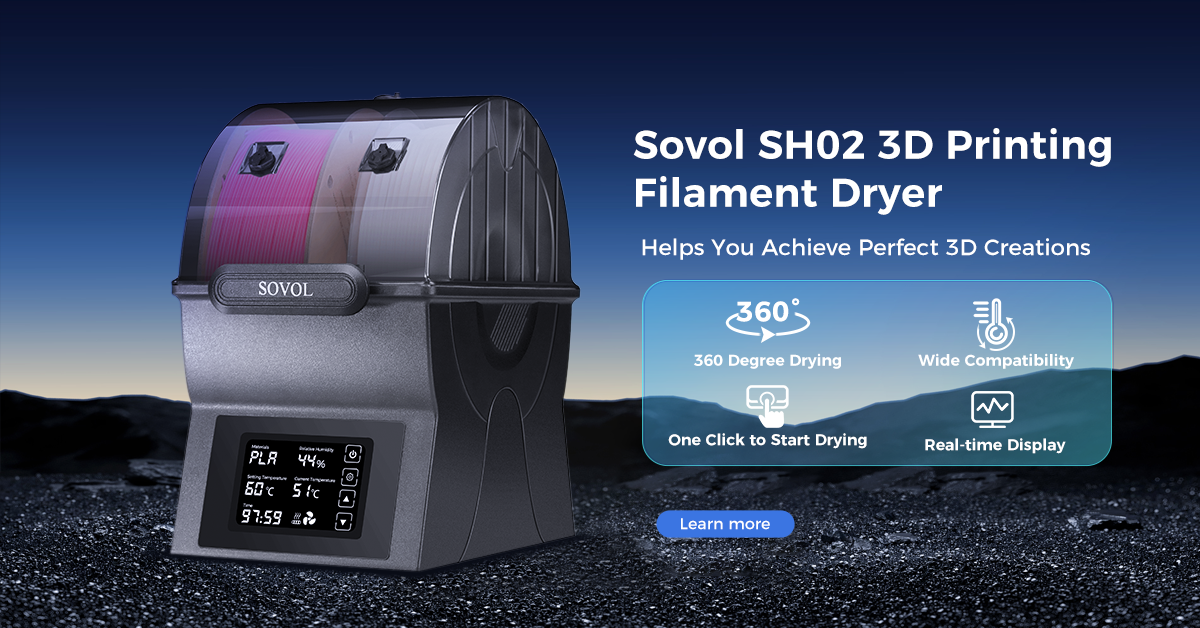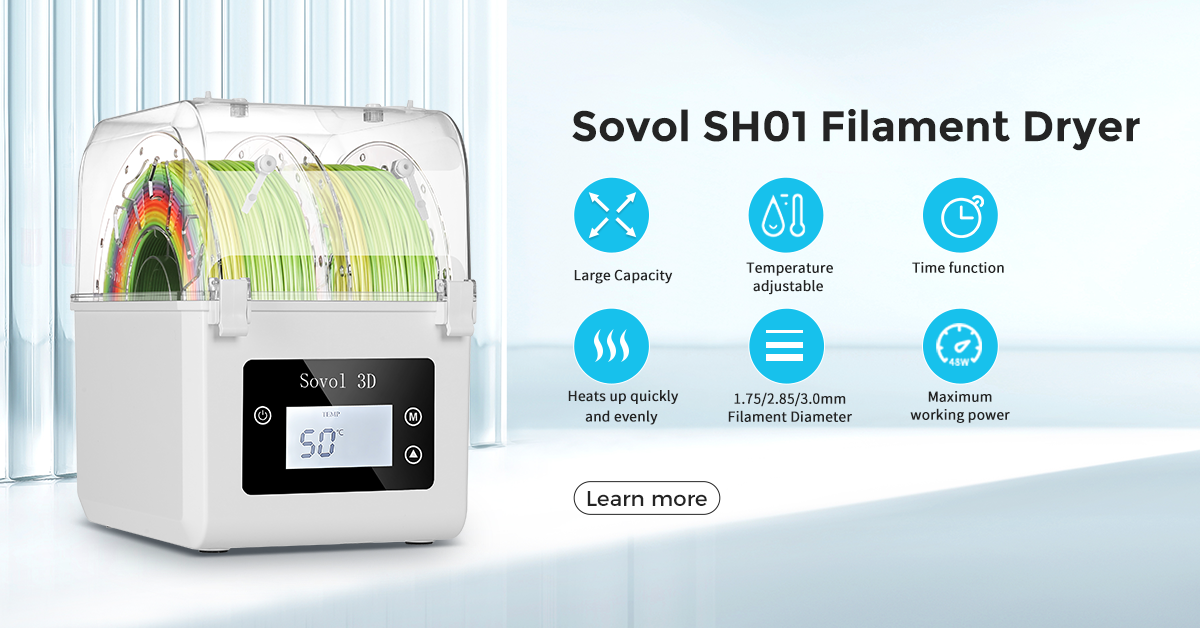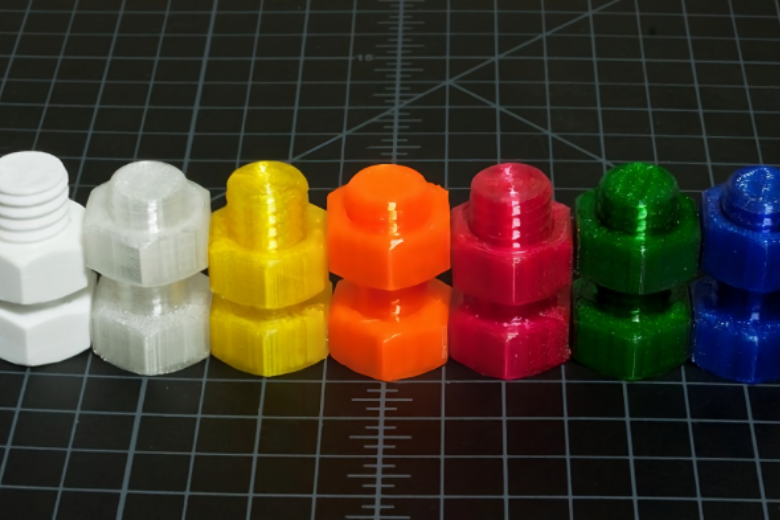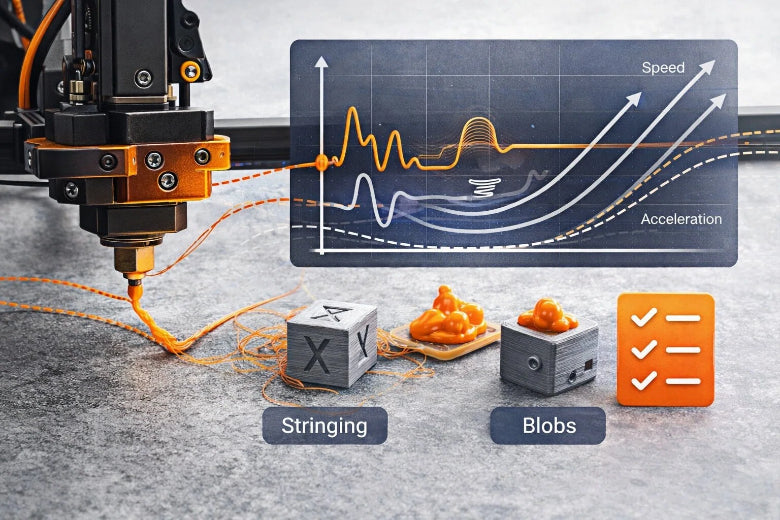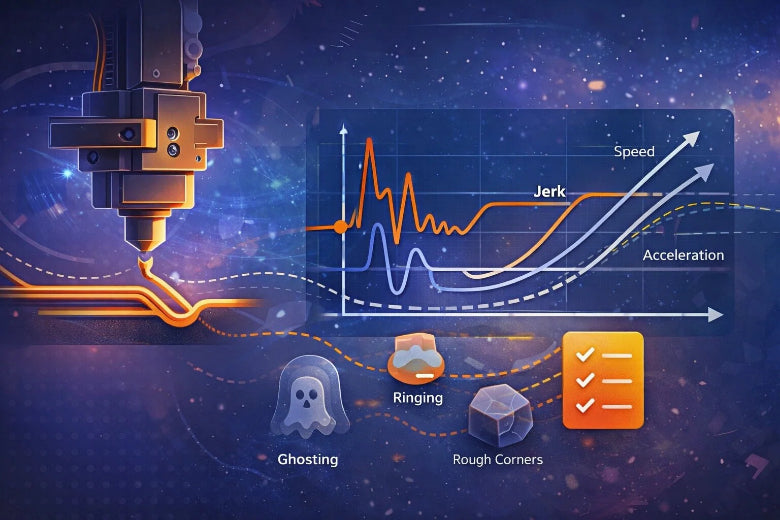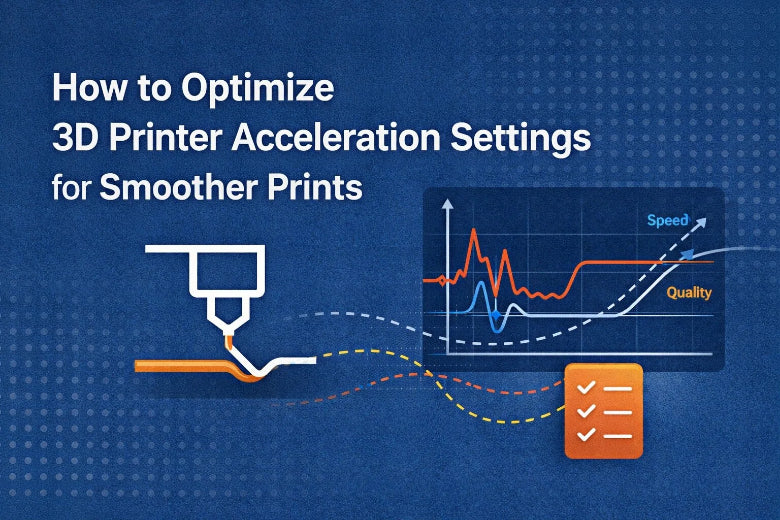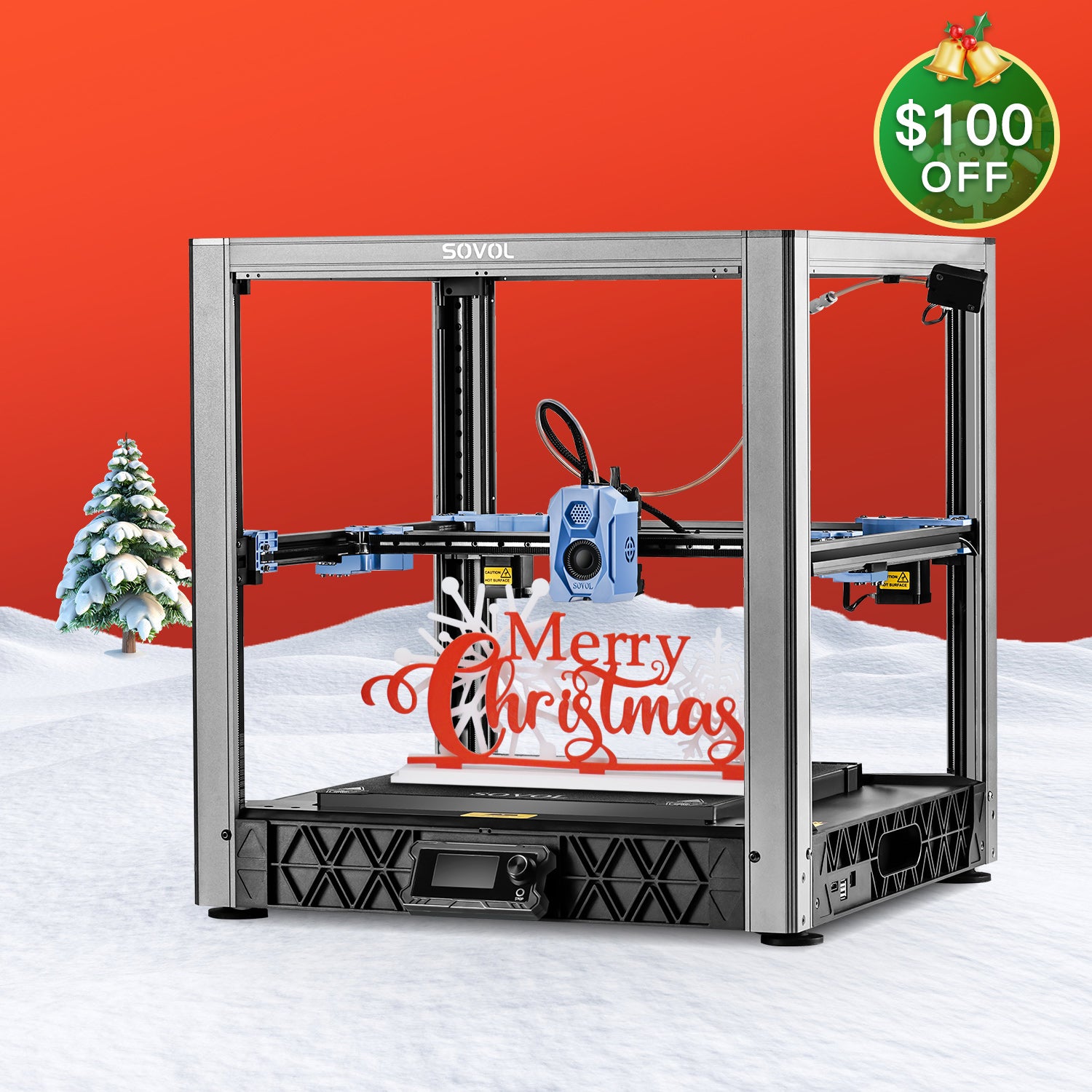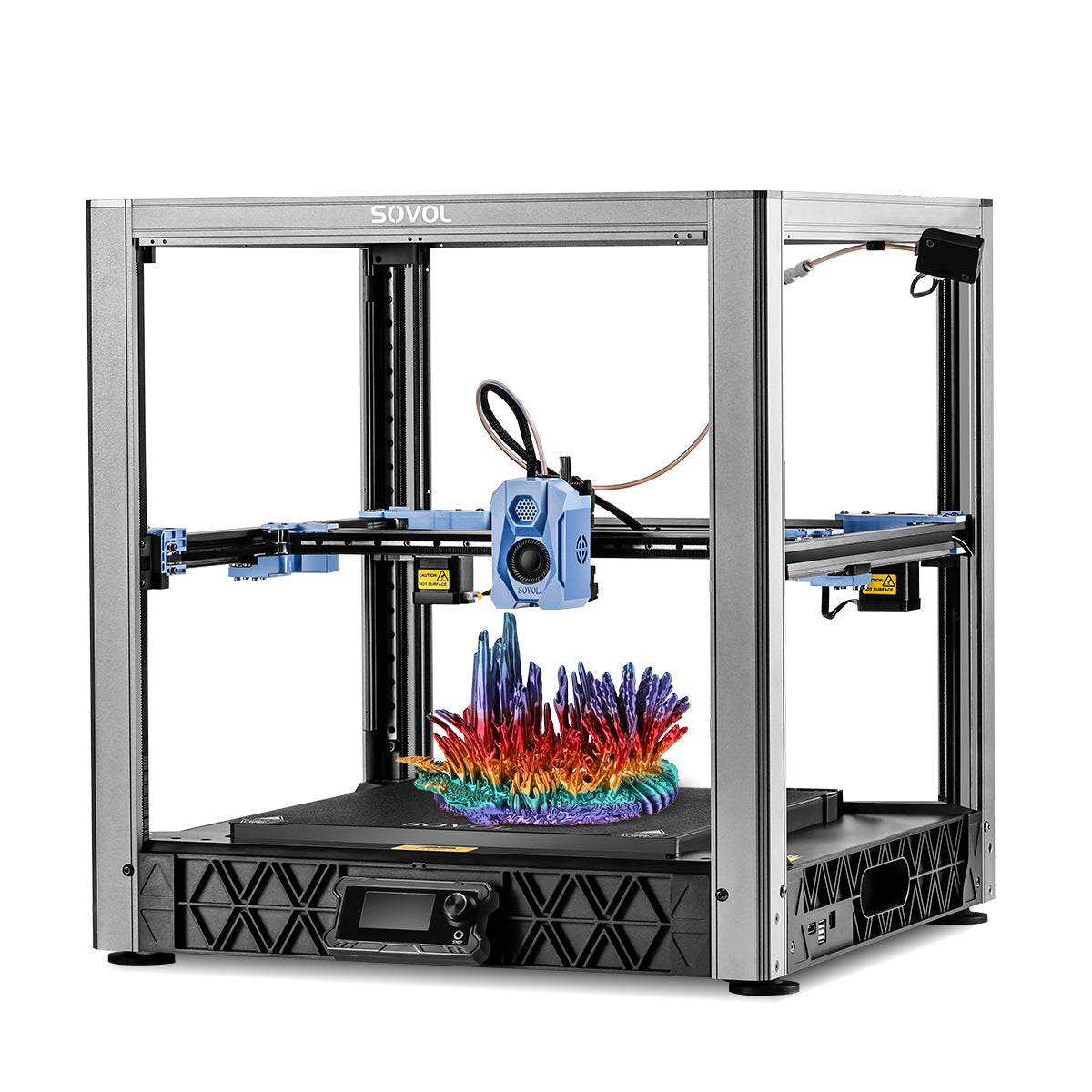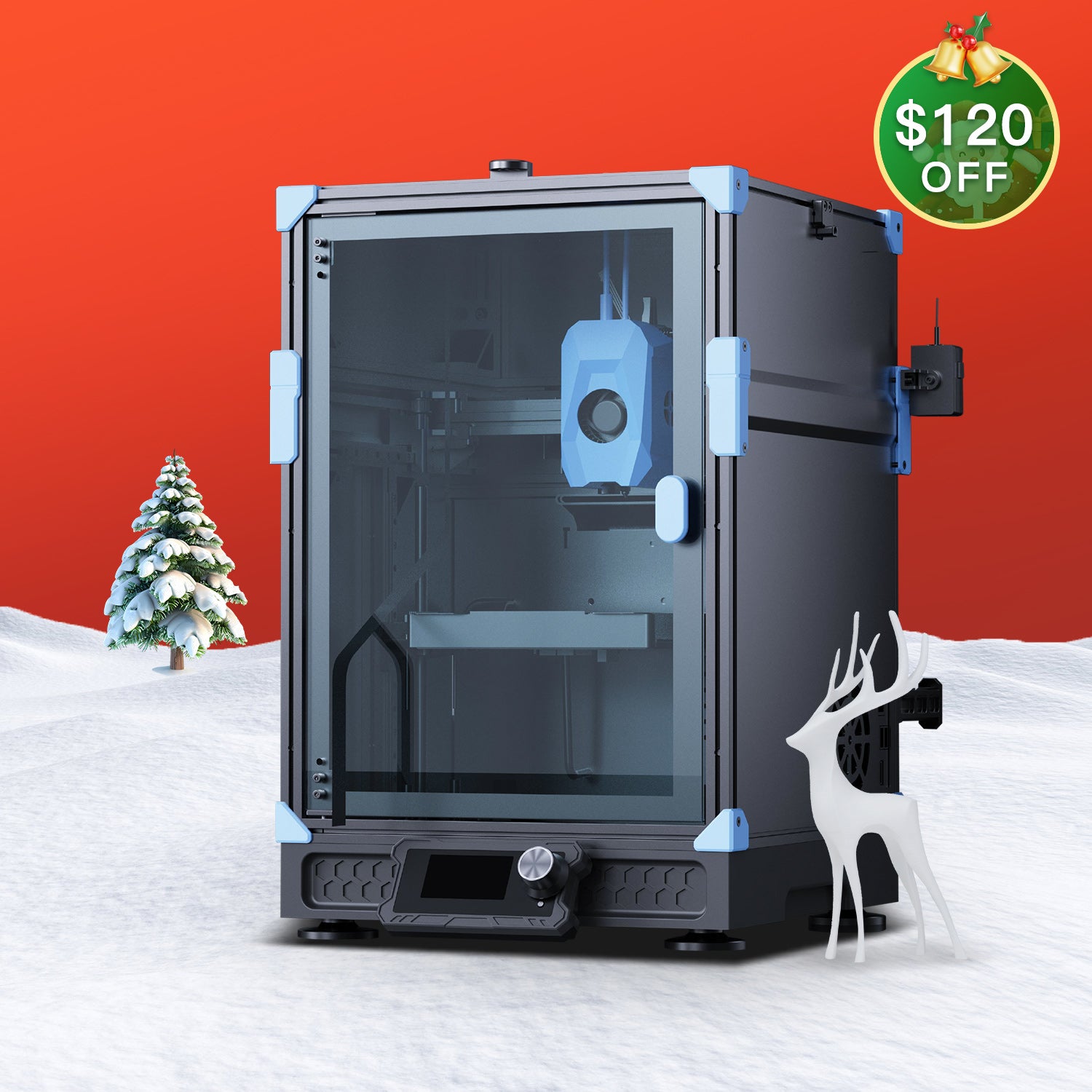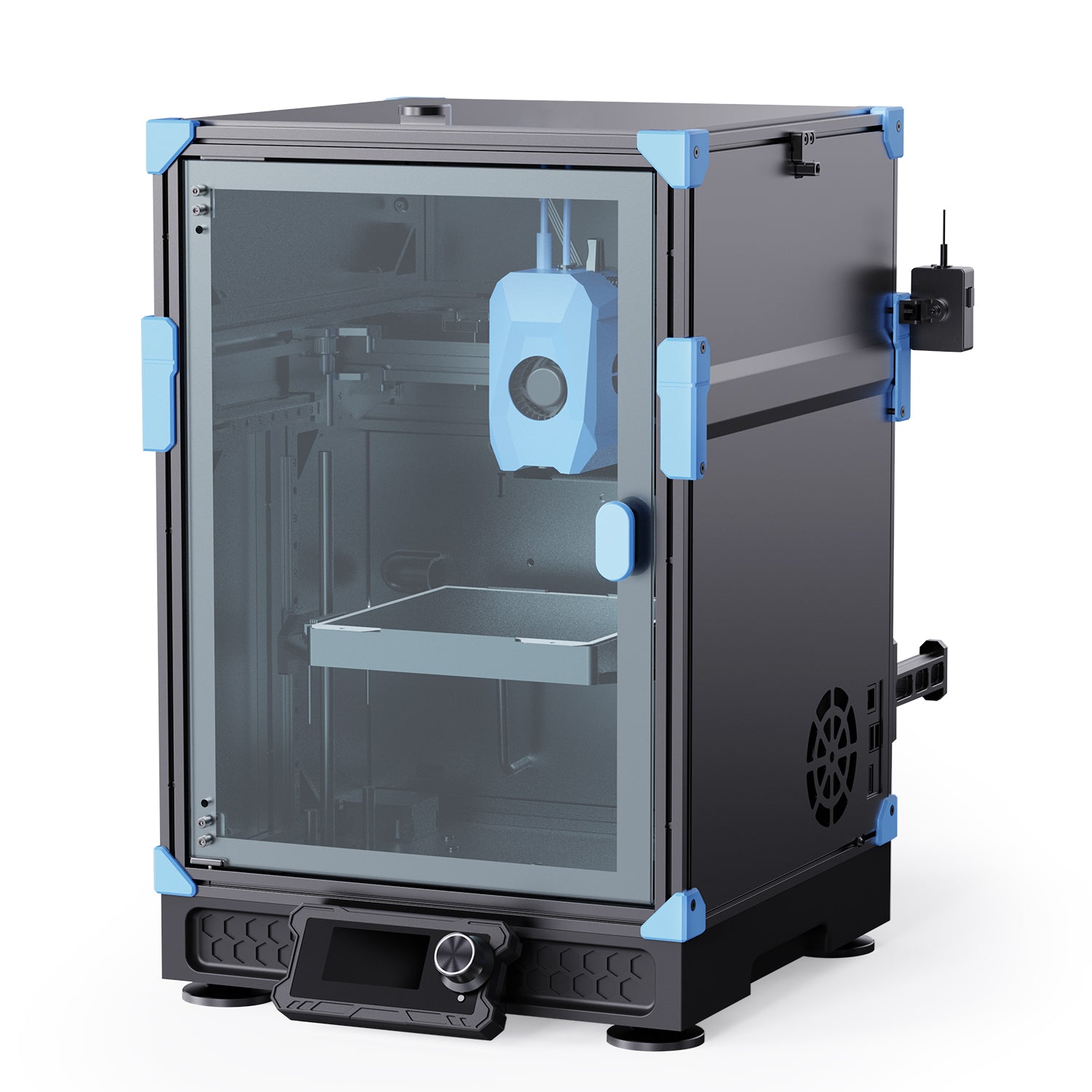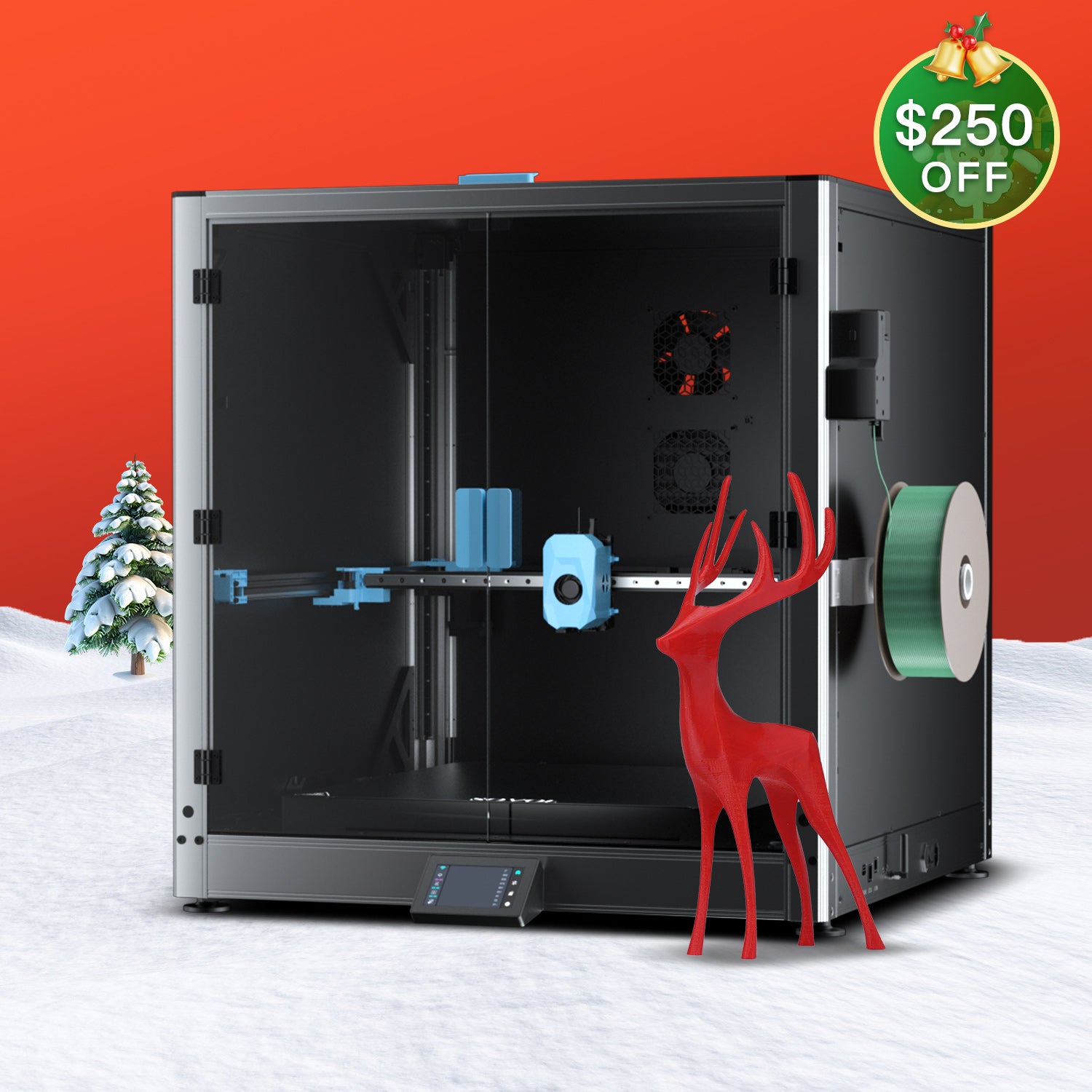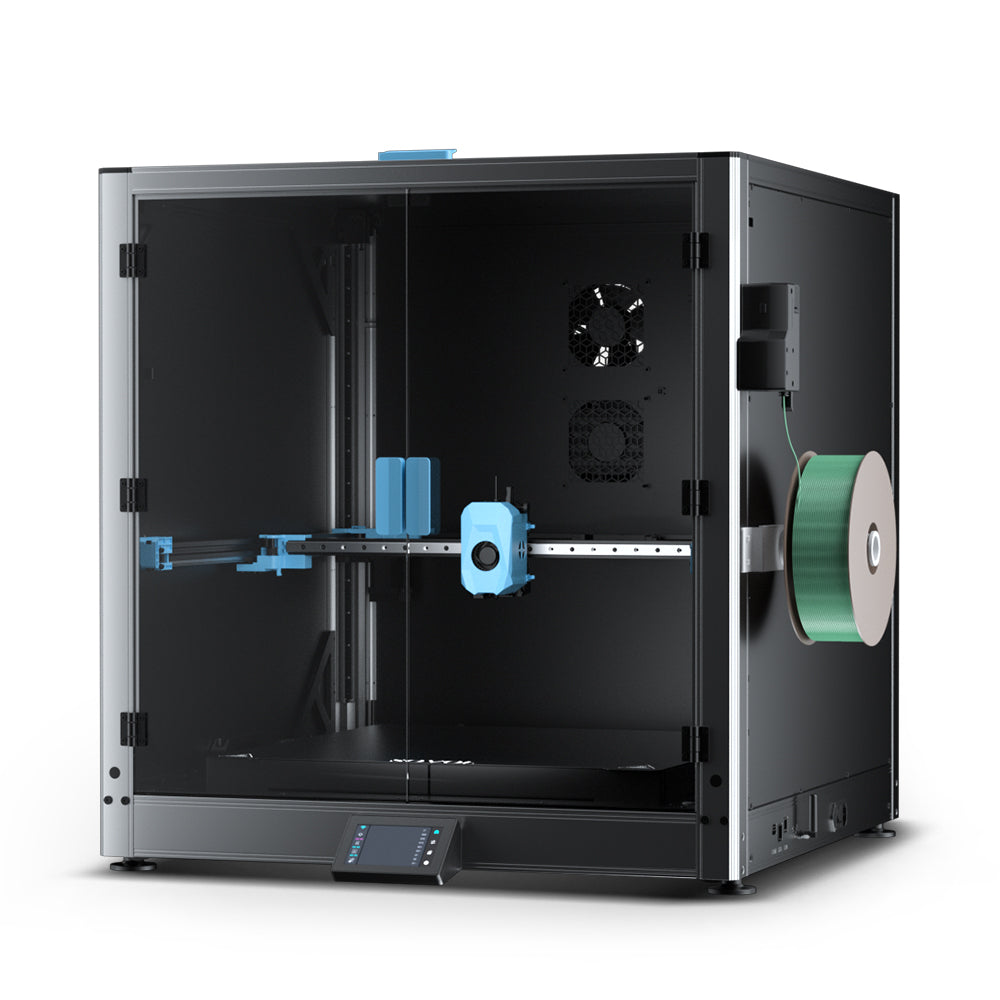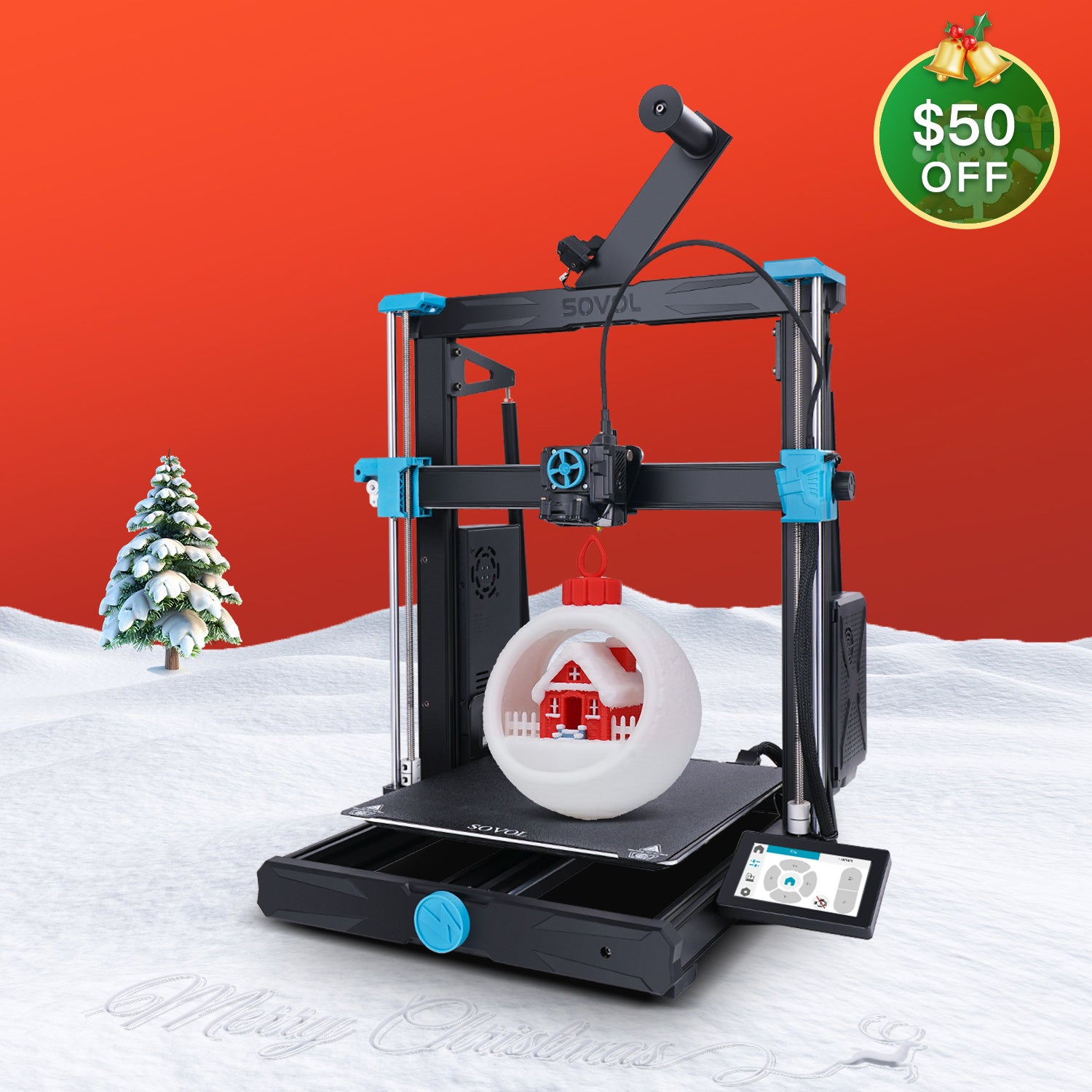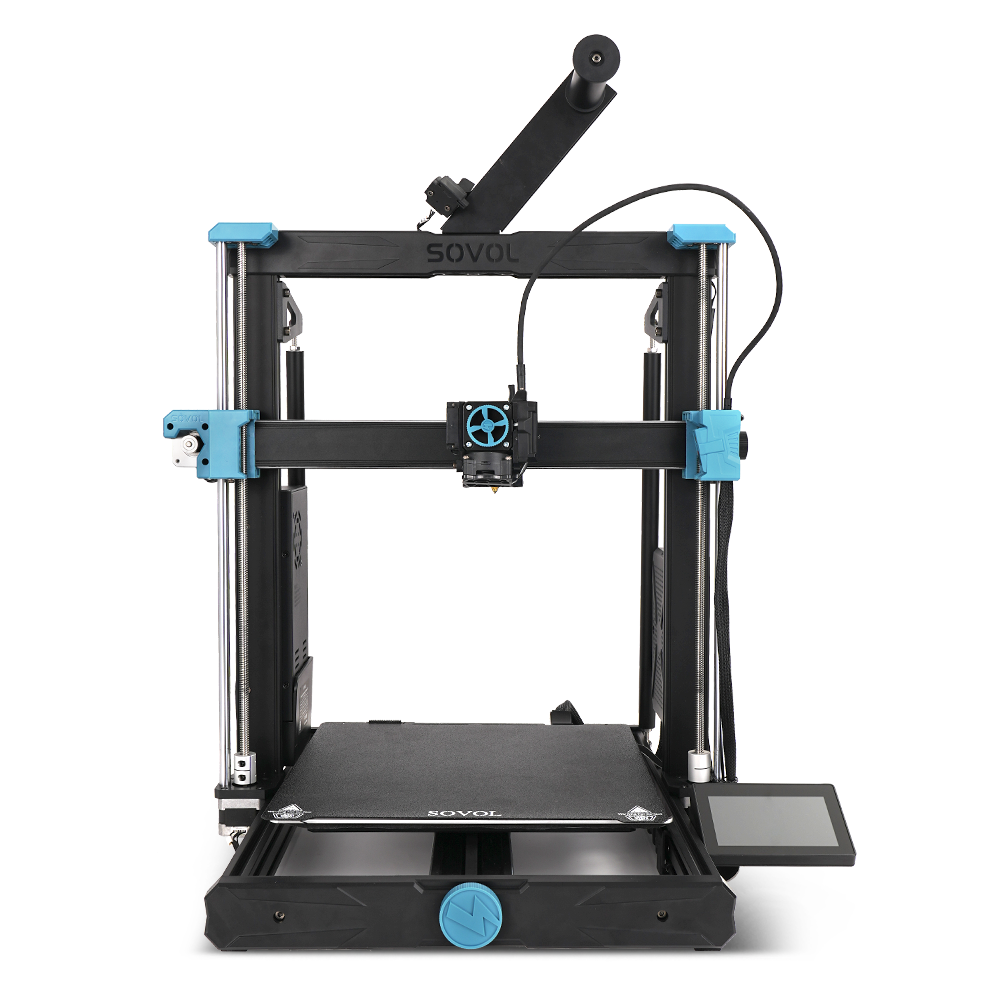If you want reliable results in 3D printing, PETG filament stands out as your best choice. This 3d printing material offers a unique balance between strength and flexibility, giving you both durability and flexibility in every print. With PETG, you benefit from high tensile strength, impressive impact resistance, and smooth printing performance. Sovol PETG 3D Filaments 2KG delivers consistent extrusion and a glossy finish, making it one of the best PETG filament options for any project. Consider how using PETG can elevate your 3d printing experience and improve your final material quality.
Key Takeaways
- PETG filament offers strong, durable prints with excellent impact resistance, making parts last longer and handle stress well.
- Printing with PETG is easy and reliable, providing consistent results and minimal warping when using proper settings.
- PETG creates smooth, glossy finishes with strong layer bonding, giving your prints a professional look without extra work.
- This filament resists chemicals, heat, and outdoor conditions, making it ideal for functional parts exposed to tough environments.
- PETG is versatile for many projects, from sturdy prototypes to beautiful artistic models, supporting both beginners and experts.
Strength and Durability
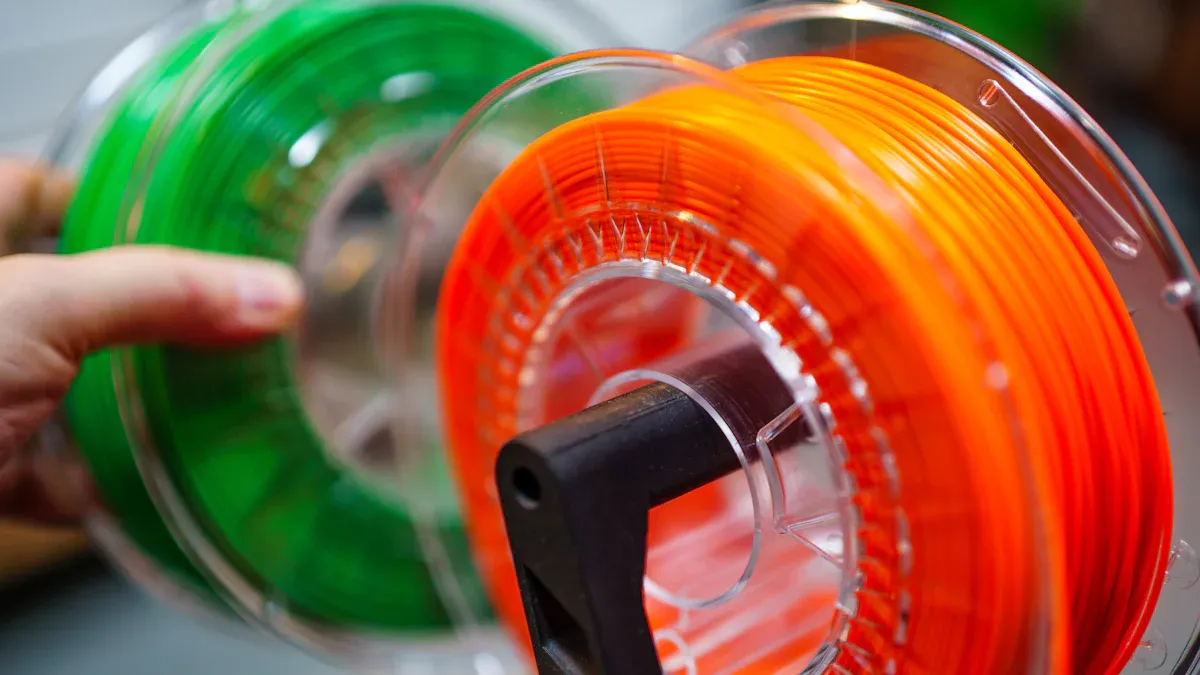
When you choose PETG filament for your 3D printing projects, you gain a unique combination of strength and durability. PETG stands out among common 3D printing materials because it balances toughness, flexibility, and resistance to wear. Compared to PLA and ABS, PETG offers a superior blend of mechanical properties, making it ideal for functional parts that need to withstand daily use.
Impact Resistance
PETG filament for impact resistance is a top performer. If you need parts that can handle drops, bumps, or mechanical stress, PETG delivers. The following table compares the impact resistance of popular 3D printing materials:
|
Material |
Impact Resistance (kJ/m²) |
|---|---|
|
PLA |
26.6 ± 2.8 |
|
PETG |
As you can see, PETG has nearly double the impact resistance of PLA. This means your 3D printed parts can absorb shocks and resist cracking much better. PETG also combines strength with flexibility, so your prints can bend slightly under pressure without breaking. ABS is known for toughness, but PETG offers a better balance of flexibility and impact resistance, making it a smart choice for parts that need to survive real-world use.
Tip: Sovol PETG 3D Filaments 2KG provides consistent impact resistance, making it reliable for printing brackets, gears, and other functional components.
Long-Lasting Prints
Durability and strength are essential for any 3D printed parts you plan to use over time. PETG filament excels in this area. Scientific studies show that PETG undergoes ductile deformation before failure, which means it stretches and absorbs energy rather than snapping suddenly. This property helps your prints last longer, even under repeated stress.
- PETG resists moisture, UV light, and heat, so your prints stay strong outdoors or in harsh environments.
- The material supports heavy loads and maintains flexibility, allowing parts to handle bending and pressure.
- Excellent layer adhesion and low warping during printing ensure your parts remain structurally sound.
Sovol PETG 3D Filaments 2KG is engineered for long-term use. You can trust it to produce parts that maintain their mechanical integrity, whether you need them for home projects or demanding industrial applications. PETG’s toughness and resistance to cracking make it a dependable choice for any project that requires lasting performance.
Easy 3D Printing
PETG filament stands out as a 3d printing material that offers you a reliable and easy printing experience. Many users find PETG easy to print once they understand the right settings. You can achieve a high degree of precision and consistent results with the right approach, making it a favorite for both hobbyists and professionals.
Consistent Results
When you use PETG, you benefit from its ability to deliver consistent results across different projects. Reviews from 3d printing experts highlight PETG’s dimensional stability and strong adhesion between layers. You can print complex geometries with confidence, knowing that PETG maintains its shape and strength even after annealing. Many users report minimal stringing, which you can easily resolve by adjusting retraction settings. PETG filament for precision and accuracy ensures your parts fit together perfectly and perform as expected.
Sovol PETG 3D Filaments 2KG takes consistency to the next level. Its tight diameter tolerance of ±0.02 mm guarantees smooth extrusion and reliable printing. You can use this filament with most 3d printers, making it a versatile choice for any 3d printing project.
Note: PETG’s learning curve is moderate, but you can master it with practice. Here are some tips for beginners:
- Set your nozzle temperature between 220-260°C and your heated bed to 70-90°C.
- Adjust print speed and cooling for best results.
- Ensure good bed adhesion to prevent print failures.
- PETG offers more strength and durability than PLA, making it worth the effort.
Minimal Warping
PETG helps you achieve minimal warping, which is essential for reliable 3d prints. Warping occurs when a material shrinks unevenly during cooling. PETG’s shrinkage rate is lower than ABS and close to PLA, so you get stable prints with fewer issues.
|
Material |
Shrinkage During Cooling (%) |
|---|---|
|
PLA |
0.3 - 0.5 |
|
PETG |
0.2 - 1.0 |
|
ABS |
0.7 - 1.6 |
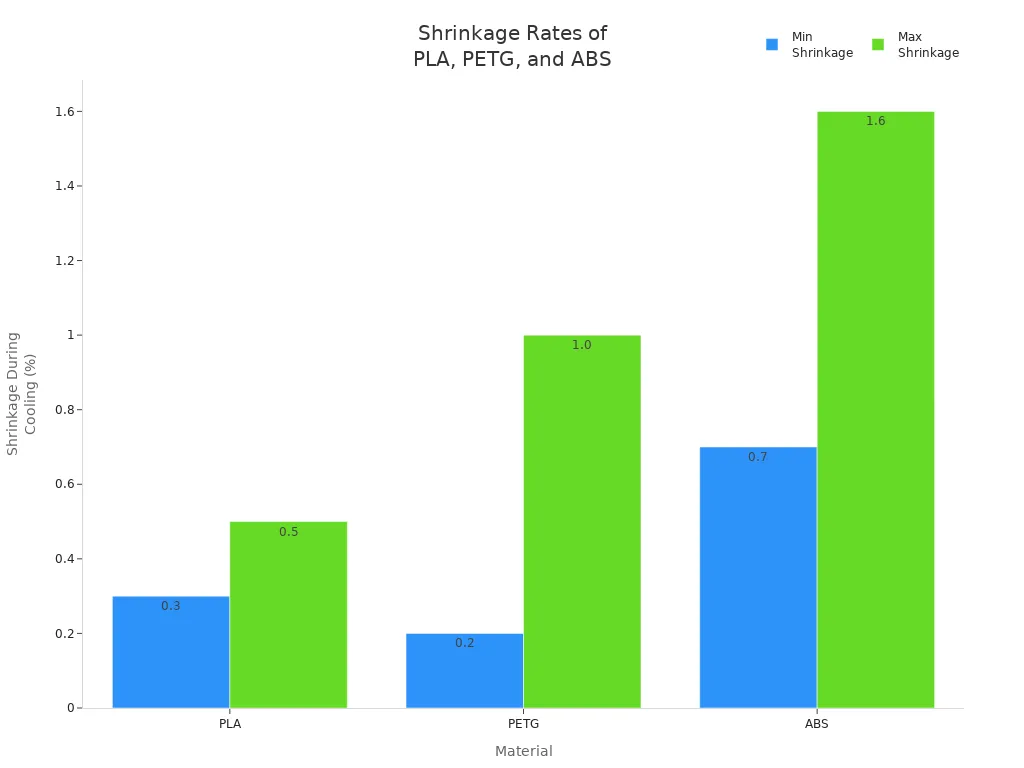
You can rely on PETG filament to provide minimal warping, especially when you use Sovol PETG 3D Filaments 2KG. Its excellent adhesion properties and compatibility with most 3d printers help you achieve easy printing and strong, accurate parts every time.
Layer Adhesion and Finish
When you print with PETG, you experience excellent adhesion between layers. This property gives your prints a solid structure and helps prevent delamination. PETG filament for strong layer bonding stands out because it combines strong layer bonding with a visually appealing finish. You can rely on PETG to deliver both strength and a professional look.
Smooth Surface
PETG offers good visual quality and a surface that resists scratches. While PLA is known for its smoothness, PETG provides a balance between durability and appearance. You can see how PETG compares to other materials in the table below:
|
Material |
Visual Quality & Surface Finish |
Finishing Methods |
User Rating Summary |
|---|---|---|---|
|
PLA |
Excellent surface smoothness; preferred for aesthetic and concept models due to ease of use and wide color availability. |
Sanding and filler primers work best; not suitable for vapor smoothing. |
Highly favored for superior surface finish and ease of finishing. |
|
PETG |
Good visual quality; surface is more scratch-resistant but less smooth than PLA. |
Requires careful sanding and priming; light sanding and polishing recommended; painting needs surface prep. |
Rated as having good finish but less smooth than PLA; balance of durability and appearance. |
|
ABS |
Strong and impact-resistant but prone to warping; surface quality challenges without post-processing. |
Vapor smoothing (acetone) effective for glossy finish; requires more post-processing. |
Less common for visual models due to finishing difficulty; benefits from vapor smoothing for high-quality finish. |
You can improve the surface of PETG prints with post-processing. Ironing, a technique that passes the nozzle over the top layer, can reduce surface roughness by up to 96%. The chart below shows how ironing affects PETG surface roughness:
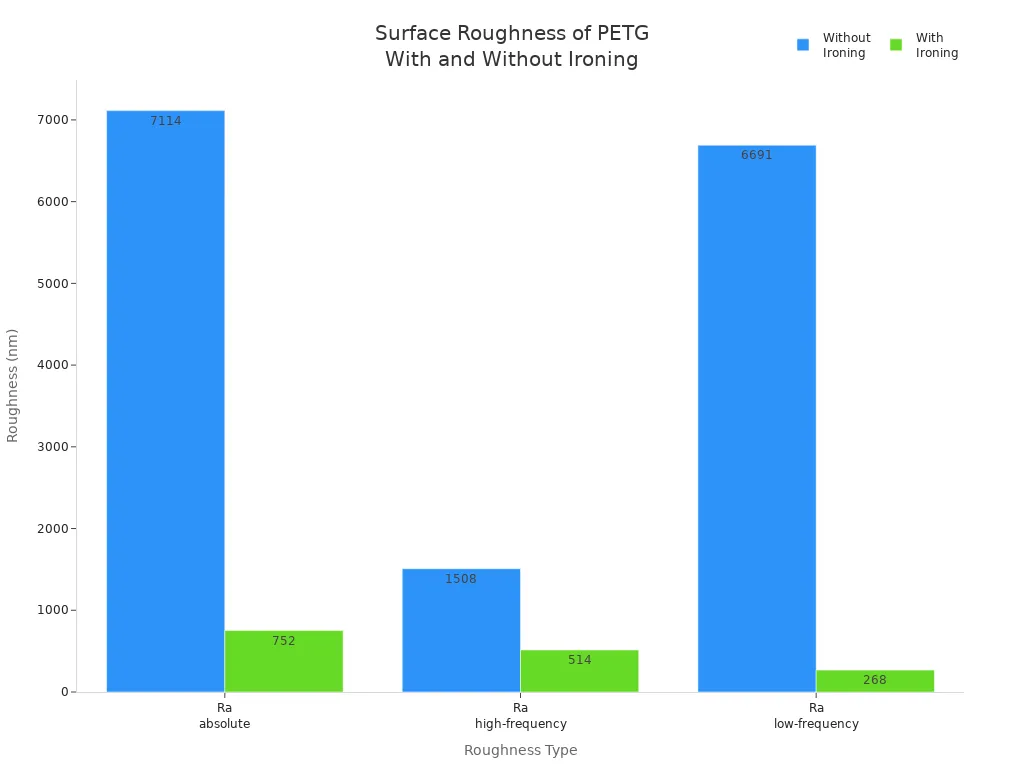
Printing temperature also affects surface finish. At 240°C, PETG achieves a lower roughness (Ra) of about 6.6 μm, giving you a smoother result. You can further enhance the finish with light sanding or polishing.
Glossy Appearance
PETG stands out for its naturally glossy finish. The inherent properties of this filament create a shiny surface that looks professional and clean. You do not need extra chemicals or complex post-processing to achieve this effect. PETG combines clarity and gloss with strong layer bonding, so your prints look great and stay durable.
Sovol PETG 3D Filaments 2KG delivers a high-gloss finish in both black and white color options. You can choose the color that fits your project, knowing that each print will have a consistent, attractive sheen. PETG’s glossy appearance comes from its material structure, which reflects light and enhances visual appeal.
Tip: For the best results, keep your print settings optimized and ensure proper adhesion to the build plate. This approach helps you achieve both a glossy finish and strong layer bonding throughout your print.
PETG’s adhesion properties make it ideal for projects where both strength and appearance matter. You can trust this filament to deliver reliable adhesion, a smooth surface, and a glossy look every time.
Chemical and Heat Resistance
PETG stands out for its impressive chemical resistance and ability to handle higher temperatures. You can rely on this filament when your projects demand exposure to challenging environments. PETG maintains its mechanical properties even after contact with many common chemicals, making it a smart choice for functional parts.
|
Chemical |
Exposure Duration |
Tensile Strength Retention (%) |
Impact Resistance Retention (%) |
|---|---|---|---|
|
Distilled Water |
7 days |
>97 |
92–97 |
|
8% Acetic Acid |
7 days |
>97 |
92–97 |
|
30% Hydrogen Peroxide |
7 days |
>97 |
92–97 |
|
99.5% Ethanol |
7 days |
~94 |
~90 |
|
99% Isopropyl Alcohol |
7 days |
~85 |
~64 |
|
37% Hydrochloric Acid |
7 days |
~80 |
~72 |
|
Acetone |
24 hours |
~50 |
Similar trend |
|
Acetone |
7 days |
~30 |
Similar trend |
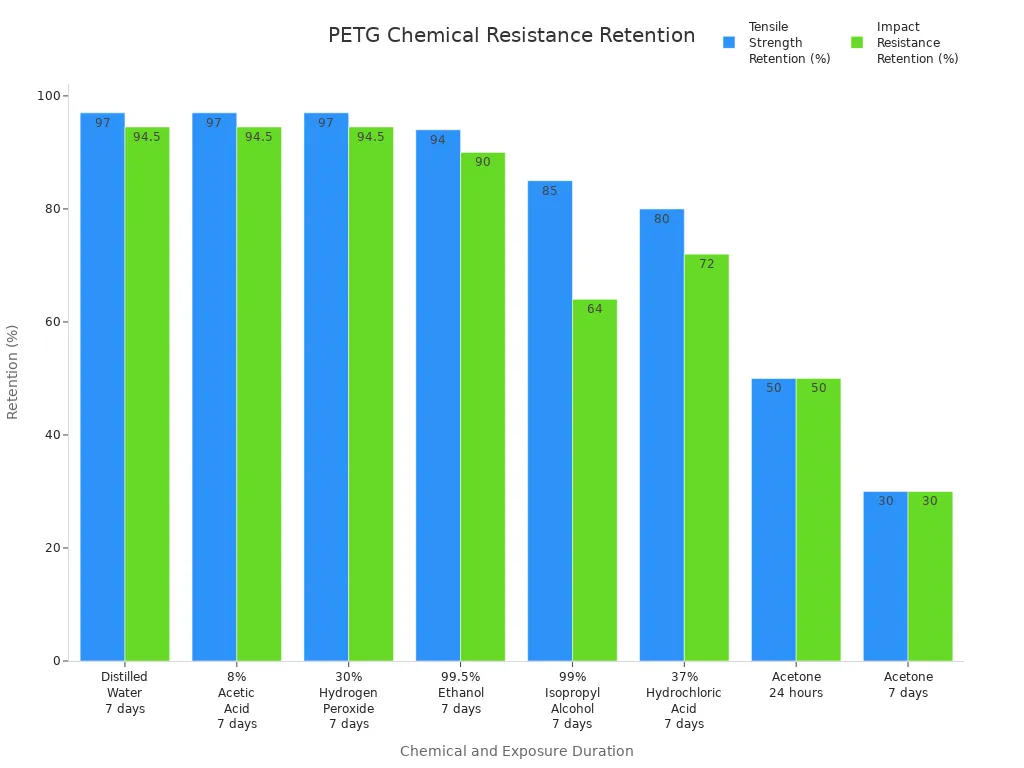
Outdoor Use
You can use PETG filament for outdoor applications because it resists water, many chemicals, and moderate UV exposure. This material keeps its strength and flexibility even when exposed to moisture or sunlight. Black PETG, like Sovol PETG 3D Filaments 2KG, offers better UV protection than semi-transparent options. For best results, you can apply a UV-blocking coating or paint to extend the lifespan of your prints.
- PETG combines strength and toughness with low water absorption.
- It performs well in outdoor parts exposed to rain, humidity, and sunlight.
- Additional coatings or sealants help preserve durability and appearance.
Tip: For outdoor projects, choose black PETG and consider a protective finish to maximize longevity.
Stable Performance
PETG filament delivers stable performance in environments with fluctuating temperatures. You can trust this material to keep its shape and strength up to 70°C, which is much higher than PLA. The glycol modification in PETG’s structure reduces brittleness and helps the filament resist deformation. This stability makes PETG ideal for automotive, industrial, and outdoor uses where temperature changes are common.
|
Material |
Approximate Softening / Annealing Temperature |
Heat Resistance Characteristics |
|---|---|---|
|
PLA |
Softens around 50-65°C; annealed up to ~90°C |
Bends easily above 50°C |
|
PETG |
Maintains shape in hot environments |
You can optimize print settings—such as nozzle and bed temperature—to further enhance print quality and stability. Sovol PETG 3D Filaments 2KG performs reliably in demanding conditions, making it a top choice for projects that require both chemical resistance and consistent performance.
Versatile Filament Applications
PETG stands out in 3d printing for its versatility. You can use this material for a wide range of projects, from robust mechanical parts to creative artistic models. PETG filament for versatile performance gives you the flexibility to tackle both functional and decorative applications with confidence. Sovol PETG 3D Filaments 2KG, available in black and white, ships globally, making it easy for you to access reliable filament wherever you are.
Prototyping
When you need to create prototypes that must withstand real-world testing, PETG delivers. Its strength, chemical resistance, and durability make it a top choice for engineers and designers. You can print gears, brackets, housings, and even custom enclosures for electronics. PETG’s resilience ensures your 3d printed parts perform well under stress and repeated use.
Here is a table showing common prototyping applications for PETG across different industries:
|
Application Area |
Description |
Industries/Examples |
|---|---|---|
|
Functional Prototyping |
Mechanical strength and flexibility for real-world resilience |
Automotive, Manufacturing, Robotics |
|
Mechanical Parts |
Gears, brackets, housings with wear resistance |
Industrial manufacturing |
|
Outdoor Applications |
UV and weather resistant parts |
Outdoor equipment |
|
Medical and Food Containers |
Chemical resistant, sterilizable, FDA-compliant |
Medical devices, Food packaging |
|
Custom Enclosures |
Electronic device cases with insulation and resistance |
Electronics industry |
You can also use PETG for tools, jigs, and fixtures in manufacturing. Its low warping and stable printing make it ideal for precise, functional prototypes.
Use PETG when you need strong, chemical-resistant items like machine covers or lab tools.
Artistic Models
PETG’s glossy finish and clarity make it perfect for artistic and decorative 3d printing projects. You can print vases, lampshades, display cases, and custom ornaments that stand out. The material’s slight flexibility reduces the risk of cracking, so your decorative prints last longer. PETG’s weather and UV resistance allow you to create outdoor art pieces that maintain their appearance over time.
- PETG’s smooth surface and transparency enhance the visual appeal of your models.
- You can achieve high-quality results with minimal post-processing.
- The material’s durability ensures your creations withstand handling and display.
Hobbyists and artists choose PETG for its balance of strength and beauty. You can bring your creative ideas to life, knowing your prints will look polished and remain durable.
PETG’s versatility in 3d printing sets it apart from other materials. Whether you focus on engineering prototypes or artistic models, you benefit from reliable performance and a wide range of applications. Sovol PETG 3D Filaments 2KG supports your projects with consistent quality and global availability.
You gain many advantages when you choose the best petg filament for your 3D printing projects.
- Strong layer bonding and excellent chemical resistance help you create durable, functional parts.
- Smooth, glossy finishes and easy printing make your designs stand out.
- The Sovol PETG 3D Filaments 2KG offers reliability and versatility for both beginners and professionals.
For your next project, explore Sovol’s best petg filament options to achieve consistent, high-quality results.
FAQ
What printer settings work best for Sovol PETG 3D Filaments 2KG?
Set your nozzle temperature to 220°C and your heated bed to 70°C. Use a print speed up to 150 mm/s for optimal results. Adjust retraction and cooling settings to minimize stringing and improve surface quality.
Can you use Sovol PETG filament with any 3D printer?
Yes, Sovol PETG 3D Filaments 2KG works with most FDM 3D printers that support 1.75 mm filament. Always check your printer’s specifications before starting a new print.
How do you store PETG filament to keep it in top condition?
Store PETG filament in a dry, cool place. Use a sealed bag with desiccant packs to prevent moisture absorption. Proper storage helps you avoid print quality issues and ensures consistent results.
Is PETG filament safe for food contact or medical use?
PETG offers good chemical resistance and is often used for food containers and medical devices. For safety, always verify the filament’s certifications and print in a clean environment. Sovol PETG 3D Filaments 2KG provides reliable quality for demanding applications.

